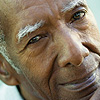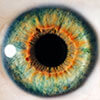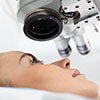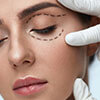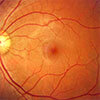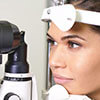Dry Eye
Dry Eye
Dry eye occurs when the eye does not produce tears properly, or when the tears are not of the correct consistency and evaporate too quickly. In addition, inflammation of the surface of the eye may occur along with dry eye. 86% of dry eye patients have a condition known as MGD, and it is treatable. If left untreated, this condition can lead to pain, ulcers, scars on the cornea, and some vision loss. However, permanent loss of vision from dry eye is uncommon. Dry eye can make it more difficult to perform some activities, such as using a computer or reading for an extended period, and it can decrease tolerance for dry environments, such as the air inside an airplane.
CAUSES
Dry Eye Syndrome can be caused by a number of factors including:
- Age – More likely in those over 50
- Hormones – Hormonal changes in life can cause reduced tears, namely changes with age, pregnancy, and menopause
- Medication – Antihistamines, decongestants, and more, speak with your doctor to review your medications list with you
- Health problems – Conditions such as allergies, diabetes, thyroid abnormality, and autoimmune diseases such as Sjogren’s Syndrome can cause eye dryness
- Contact lenses – Can interfere with the tear film and reduce corneal sensitivity leading to dryness
- Environmental factors – Wind, smoke, or a dry climate can lead to increased tear evaporation
- Computer use – Focusing on a computer, tablet, or phone can reduce blink rate and quality that can cause tears to evaporate too quickly
- Blepharitis (inflammation of the eyelid) – Increased bacterial loads and other inflammatory conditions can damage the meibomian glands leading to meibomian gland dysfunction and poor tear quality
TYPES OF DRY EYE
- Aqueous Deficiency – Not enough tears due to reduced tear production from the lacrimal glands.
- Evaporative Dry Eye – Tears evaporate too quickly due to deficient lipid layer of the tear film.
- Meibomian Gland Dysfunction – The #1 cause of dry eye. This commonly happens when the gland openings get clogged, and less oil reaches the eye surface causing changes to the amount or quality of the oil in the lipid layer of the tear film.
SYMPTOMS
Symptoms of Dry Eye Disease include burning and redness of the eyes, contact lens discomfort, increased dry eyes with computer, TV, reading, and driving, watery eyes/ tearing, foreign body sensation, sensitivity to light, fluctuations in vision, itchy, scratchy, or gritty eyes, dry or crusty eyes in the morning, and eye fatigue. Another symptom of Dry Eye Disease is symptoms worsening later in the day.
TREATMENTS
- Blink Exercises – Learning simple blinking exercises can help alleviate the symptoms of dryness. Exercises are easy to integrate into our daily routine and can provide relief.
- Warm Compresses – Heat applied to the eyelid can loosen the lipids in the Meibomian gland, allowing them to coat the eye. Lipids are necessary to prevent tears from evaporating too quickly.
- Omega 3 Supplements – Studies suggest that the omega-3s in Fish Oil may help treat dry eyes because of their anti-inflammatory properties.
- Artificial Tears – These eye drops are available over the counter at most drug stores. Doctors often recommend a preservative-free formula to minimize the risk of rebound symptoms caused by irritation from preservatives.
- Ointments – These are thick, gel-like products that are placed inside the eyelid, usually before going to bed. They keep the eye moisturized throughout the night, when eyes may not remain fully closed.
- Lid Hygiene – These can be scrubs, sprays, wipes, or baby shampoo and water, used to treat blepharitis (overgrowth of bacteria) and to remove crusting, make-up, and other debris along the lash margin.
- Prescription Medications – Your eye doctor may prescribe eyedrops and/or oral medications depending on the cause of your dry eyes.
- Punctal Plugs – The puncta are small holes in the eyelids that drain away excess fluid. Punctal plugs are small, silicone posts inserted into the puncta to prevent them from draining. This allows the tear to remain on the surface of the eye for as long as possible.
SPECIALTY TREATMENTS
- Intense Pulsed Light (IPL) – Uses light to treat underlying inflammation and abnormal blood vessels causing MGD and DES.
- Serum Tears – Are a specialty eye drop made from a carefully prepared formulation of the patient’s own blood. This treatment is usually reserved for severe cases of dry eye.
- Meibomian Gland Expression – Blocked Meibomian Glands can be cleared by using special tools and gently applied pressure allowing the oils to be released.
- Scleral Contact Lenses – These contact lenses cover both the cornea and the white of the eye. When filled with preservative free saline solution they provide constant hydration and relief of dry eye.
- Eyelid Surgery – In some cases, an eyelid condition may be responsible for dry eye. If this occurs eyelid surgery may be recommended.
Lipiflow
We are proud to offer Lipiflow to treat the #1 cause of Dry Eye
An estimated 86% of the 100 million dry eye sufferers worldwide have evaporative dry eye, which stems from a deficiency in the oily lipid layer of the tear film. This lipid deficiency is most commonly due to blockages in the Meibomian glands, a condition called Meibomian Gland Dysfunction (MGD). Over several years this chronic, progressive condition can cause blocked Meibomian glands to atrophy and “drop out,” thereby increasing symptoms and the
likelihood of other ocular complications.
LipiFlow works by applying localized heat and pressure to the affected glands of patients suffering from chronic cystic conditions of the eyelids, including Meibomian Gland Dysfunction. Unlike traditional dry-eye treatments (warm compresses, artificial tears, ointments), LipiFlow treats the root cause by unblocking obstructed meibomian glands. Studies show that the benefits of LipiFlow can last up to three years; with patients who continue to use traditional treatment methods after Lipiflow, it may last even longer.


